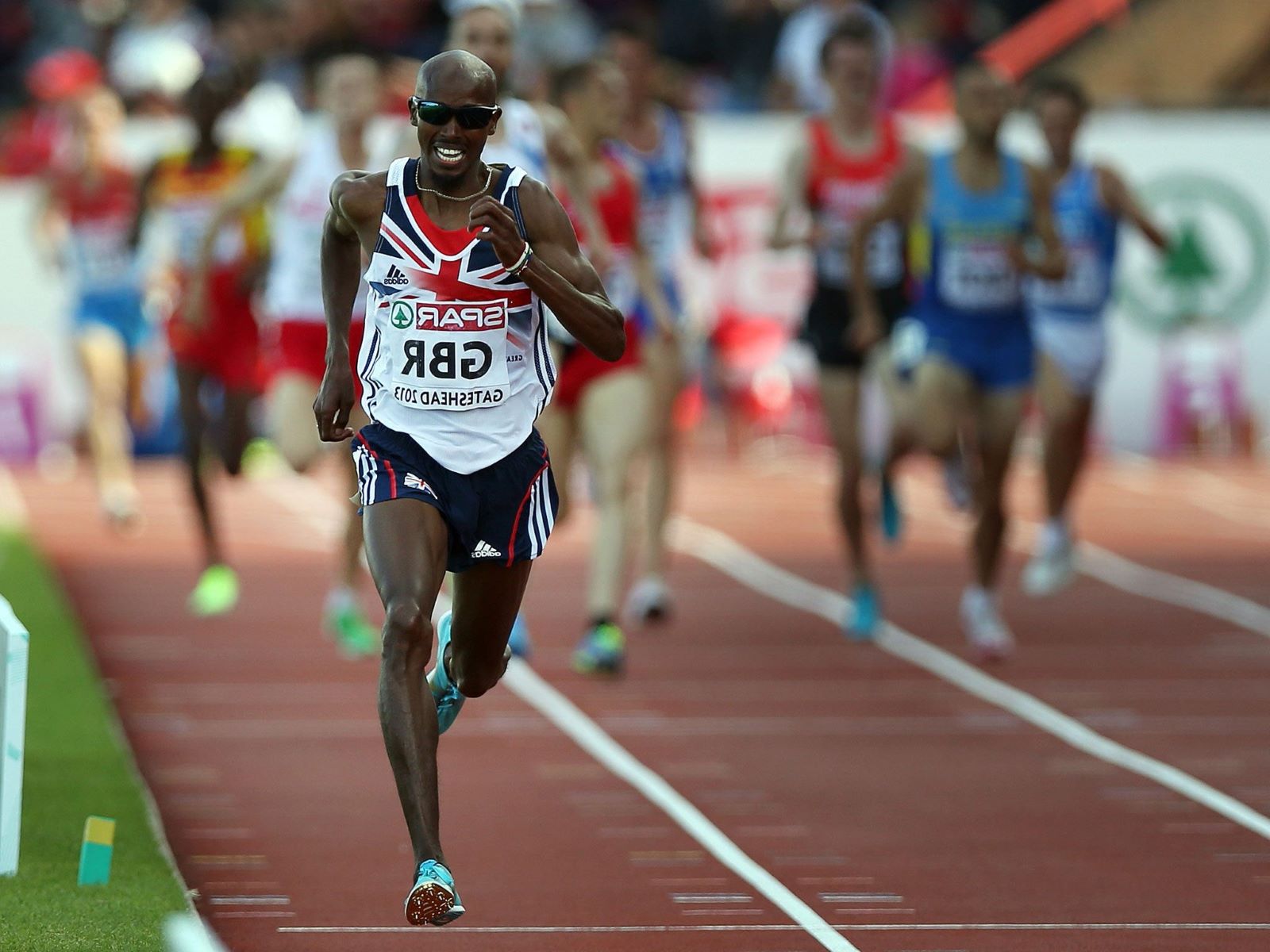Home>Health & Nutrition>Running For Fast Abs


Health & Nutrition
Running For Fast Abs
Published: March 7, 2024
Achieve fast abs with our expert tips on health and nutrition. Learn how running can help you reach your fitness goals. Unlock the secrets to a healthier lifestyle today!
(Many of the links in this article redirect to a specific reviewed product. Your purchase of these products through affiliate links helps to generate commission for Therunningadvisor.com, at no extra cost. Learn more)
Table of Contents
Benefits of Running for Abs
When it comes to sculpting a strong and defined core, running can be a highly effective exercise. Not only does it help you shed excess fat around your midsection, but it also engages and strengthens your abdominal muscles. Here are some of the key benefits of incorporating running into your routine for achieving those coveted abs:
-
Fat Burning: Running is a fantastic way to burn calories and shed excess body fat, including the stubborn layer that often covers the abdominal muscles. As you engage in regular running sessions, your body taps into its fat stores for energy, helping to reveal the muscles underneath.
-
Engages Core Muscles: Running requires stability and balance, which means your core muscles are constantly engaged to keep you upright and maintain proper form. This engagement helps to strengthen and tone your abdominal muscles over time, leading to a more defined midsection.
-
Improves Posture: A strong core is essential for maintaining good posture, and running can help you achieve just that. By strengthening your abdominal muscles, running can assist in improving your posture, reducing the risk of back pain, and giving you a taller, more confident stance.
-
Boosts Metabolism: Regular running can rev up your metabolism, leading to increased calorie burn even when at rest. This can contribute to overall fat loss, including around the abdominal area, and help reveal the toned muscles underneath.
-
Enhances Endurance: Building a strong core through running can enhance your overall endurance and stamina. A strong midsection is crucial for maintaining proper running form and can help prevent fatigue and discomfort during longer runs.
Incorporating running into your fitness routine can bring about a multitude of benefits for your abdominal muscles. From fat burning to improved posture, the advantages of running for abs are undeniable. So, lace up your running shoes and hit the pavement to start sculpting those strong and defined abs!
Proper Running Form for Abdominal Engagement
When it comes to running for abs, proper form is crucial for effectively engaging the abdominal muscles and maximizing the benefits for your core. Here's how to ensure that your running form optimally engages your abs:
-
Tall Posture: Maintain an upright posture while running, with your head up, shoulders back, and core muscles engaged. Avoid slouching forward, as this can disengage the abs and lead to inefficient running mechanics.
-
Engage Your Core: Focus on tightening your abdominal muscles as you run. Imagine pulling your belly button towards your spine to engage the deep core muscles. This not only helps to support your spine and maintain stability but also actively works your abs throughout your run.
-
Relaxed Arms: Keep your arms and hands relaxed, allowing them to swing naturally. Tensing up your upper body can lead to unnecessary tension in the abdominal area, hindering effective engagement of the core muscles.
-
Steady Breathing: Maintain a steady and controlled breathing pattern. This not only supports efficient oxygen intake but also encourages consistent engagement of the abdominal muscles as you stabilize your core with each breath.
-
Hip Alignment: Ensure that your hips are aligned and not excessively tilted forward or backward. Proper hip alignment helps to engage the lower abdominal muscles and maintain overall core stability during running.
-
Foot Strike: Pay attention to your foot strike. Aim for a mid-foot strike rather than landing heavily on your heels. This encourages a more natural and efficient running gait, which in turn supports better engagement of the core muscles.
By focusing on these key elements of proper running form, you can effectively engage your abdominal muscles throughout your run, leading to a more effective workout for your abs. So, the next time you hit the pavement, pay attention to your form and feel the burn in your core as you work towards sculpting those strong and defined abs.
Best Running Workouts for Abs
-
Interval Training: Incorporate high-intensity interval training (HIIT) into your running routine. Alternate between periods of sprinting and recovery jogging. This intense workout not only torches calories but also engages the core muscles for stability and power during sprints.
-
Hill Sprints: Find a steep hill and challenge yourself with uphill sprints. Running uphill forces your core to work harder to propel you forward, making it an excellent workout for engaging the abdominal muscles and building strength in the entire core.
-
Stair Running: Seek out a set of stairs or a stadium with bleachers for a unique abs-focused running workout. Running up stairs requires significant core engagement to drive your body upward, making it an effective way to target the abdominal muscles.
-
Medicine Ball Runs: Incorporate a medicine ball into your running routine for added resistance. Hold the medicine ball at chest height while running, engaging your core to stabilize and control the added weight, effectively working your abdominal muscles.
-
Obstacle Course Running: Seek out obstacle courses or natural terrains with varied challenges such as fallen trees, rocks, or uneven terrain. Navigating through these obstacles while running requires constant core engagement for balance and agility, providing a comprehensive core workout.
-
Barefoot Running: Consider incorporating barefoot running into your routine on safe, suitable surfaces. Running barefoot can help strengthen the muscles in your feet and lower legs, which in turn can improve overall stability and engage the core for balance and support.
-
Long, Steady Runs: While high-intensity workouts are beneficial, long, steady runs also play a role in strengthening the core. During longer runs, the core muscles work continuously to stabilize the body, making it an effective way to engage the abs over an extended period.
Incorporating these diverse running workouts into your routine can effectively target and engage the abdominal muscles, leading to a stronger and more defined core. Mix and match these workouts to keep your routine exciting and challenging while reaping the benefits of a well-rounded abs-focused running regimen.
Nutrition Tips for Running and Abs
Proper nutrition plays a vital role in supporting your running performance and sculpting strong abs. Here are some essential nutrition tips to fuel your runs and promote abdominal muscle development:
-
Balanced Diet: Focus on consuming a balanced diet that includes a variety of nutrient-dense foods such as lean proteins, whole grains, healthy fats, and plenty of fruits and vegetables. This provides the essential nutrients needed for muscle repair, energy production, and overall health.
-
Hydration: Stay well-hydrated before, during, and after your runs. Proper hydration supports optimal muscle function and aids in digestion and nutrient absorption. Aim to drink an adequate amount of water throughout the day, and consider incorporating electrolyte-rich beverages for longer runs or in hot weather.
-
Pre-Run Fuel: Prior to your runs, opt for easily digestible carbohydrates to provide a quick source of energy. Foods such as bananas, oatmeal, or whole grain toast can help fuel your muscles and sustain energy levels during your run.
-
Post-Run Recovery: After a run, prioritize refueling your body with a combination of protein and carbohydrates to support muscle recovery and replenish glycogen stores. This can include options like a protein smoothie, Greek yogurt with fruit, or a turkey and avocado wrap.
-
Healthy Fats: Incorporate sources of healthy fats such as avocados, nuts, seeds, and olive oil into your diet. These fats provide sustained energy, support hormone production, and aid in the absorption of fat-soluble vitamins essential for overall health and muscle function.
-
Protein Intake: Ensure an adequate intake of protein to support muscle repair and growth. Lean sources of protein such as chicken, fish, tofu, and legumes can help maintain and build lean muscle mass, including the muscles of the abdominal region.
-
Nutrient Timing: Consider the timing of your meals and snacks in relation to your runs. Consuming a balanced meal or snack that includes carbohydrates and protein within an hour or two of your run can support muscle recovery and replenish energy stores.
-
Avoid Overeating: While proper nutrition is essential, be mindful of portion sizes and avoid overeating, especially after runs. Consuming more calories than your body needs can hinder progress towards achieving visible abs, as excess calories can contribute to fat storage.
By incorporating these nutrition tips into your running routine, you can support your overall fitness goals, optimize your running performance, and contribute to the development of strong and defined abs. Remember that nutrition and exercise work hand in hand, and by fueling your body with the right nutrients, you can maximize the benefits of your running workouts for your abdominal muscles.
Common Mistakes to Avoid When Running for Abs
-
Poor Posture: Allowing your posture to slump while running can disengage the abdominal muscles and lead to inefficient core activation. Focus on maintaining an upright posture with your shoulders back and core engaged to ensure that your abs are actively involved in supporting your body during the run.
-
Overstriding: Striking the ground with your feet too far in front of your body can lead to excessive braking forces and unnecessary strain on the lower back. This can detract from the engagement of the abdominal muscles. Aim for a natural stride length that allows for a smooth and efficient running motion while keeping your core stabilized.
-
Relying Solely on Running: While running is an effective way to engage the abs, solely relying on this form of exercise may limit the overall development of the core. Incorporating targeted ab workouts and cross-training activities such as strength training and yoga can provide a more comprehensive approach to strengthening and defining the abdominal muscles.
-
Neglecting Breathing Technique: Inadequate breathing patterns can impact the engagement of the core muscles during running. Shallow breathing or holding your breath can lead to decreased activation of the abdominal muscles. Focus on deep, rhythmic breathing to support the engagement of your core and optimize your running performance.
-
Ignoring Recovery: Failing to prioritize adequate rest and recovery can hinder the development of strong abs. Muscles need time to repair and grow stronger after workouts, including running. Ensure that you incorporate rest days into your routine and prioritize quality sleep to support muscle recovery and overall progress.
-
Inconsistent Training: Consistency is key when it comes to seeing results in your abdominal muscles. Inconsistent or sporadic training can impede progress. Aim to establish a regular running schedule and stick to it, gradually increasing the intensity and duration of your runs to continually challenge and strengthen your core.
-
Improper Nutrition: Neglecting proper nutrition can hinder the visibility of your abs, even if you engage in regular running. Consuming an excessive amount of processed foods, sugary snacks, or unhealthy fats can contribute to excess body fat, masking the definition of your abdominal muscles. Focus on a balanced diet to support your fitness goals.
-
Lack of Cross-Training: Focusing solely on running without incorporating other forms of exercise can lead to muscular imbalances and limited overall core strength. Engaging in activities that target different muscle groups, such as swimming, cycling, or Pilates, can complement your running routine and contribute to a more well-rounded approach to developing strong abs.
By being mindful of these common mistakes and making the necessary adjustments to your running routine, you can optimize the engagement of your abdominal muscles and work towards achieving strong, defined abs.
















